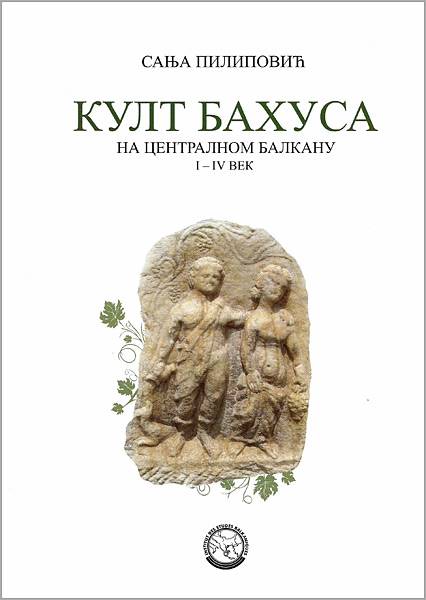News
The Cult of Bacchus on the Central Balkans from the First to the Fourth Century

The Cult of Bacchus on the Central Balkans from the First to the Fourth Century, a monograph of Sanja Pilipović recently published by the Institute for Balkan Studies SASA, assembles the results of a research on the cult of Bacchus (Dionysus, Liber) on the territory of the central Balkans, it is in the Upper Moesia and Late Roman provinces on the same territory, today stretching across Republic of Serbia.
The complexity of the cult in this area is reflected in the terms of his creation, development and dispersion as well as in the predisposition of his acceptance by the indigenous population. Some tribes through the process of interpretatio graeca could accept the cult of Dionysus. On the other hand, in the times of Roman domination, others were able to accept the cult of Bacchus through the idea of interpretatio romana, not in the Dionysian variant of orgiastic celebrations, but rather as converts, epihoric deity, chthonic or military in character. The eastern part of the province was exposed to influences from neighbouring Thrace, and in this area in respect of Sabazius, an oriental deity often assimilated with Dionysus, one can recognize the expression of imitatio orientalis of Dionysus.
The research, among the other thing, pointed to the fact that the Bacchus was venerated not only as a deity of fertility, vegetation, wine and viticulture, but also as a patron of the earth’s fertility, above ground and underground, in the same time confirmed his iatric and funeral aspect.
Adherents of the Bacchus in central Balkans came from various social groups and have different origins. Women also revered Bacchus. The relationship between the Bacchus cult and imperial ideology is discussed in the following example of Galerius palace at Gamzigrad.
The book offers a catalog of archaeological items (altars, stone and bronze scultpures, jewelry etc.) followed by an extensive ilustrated part, numerous photographs and maps.